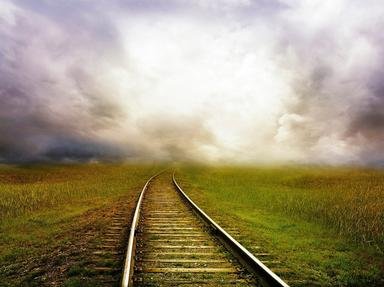
The Train Now Arriving... Trivia Quiz
Britain led the railways revolution of the 19th century. Can you match these popular rail routes with a calling point on each of them, using the most convenient direct route between the places mentioned?
A matching quiz
by darksplash.
Estimated time: 4 mins.
- Home
- »
- Quizzes
- »
- World Trivia
- »
- Trains
- »
- U.K. Railways
